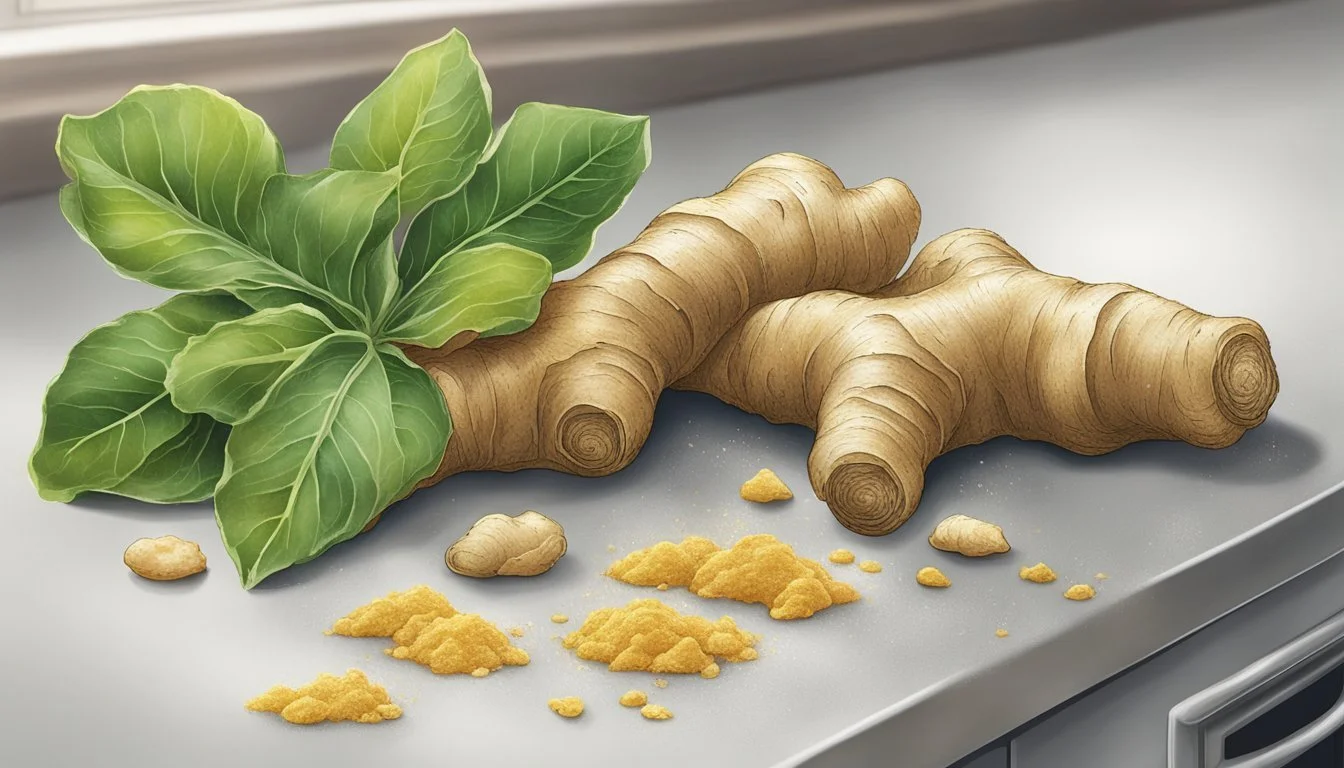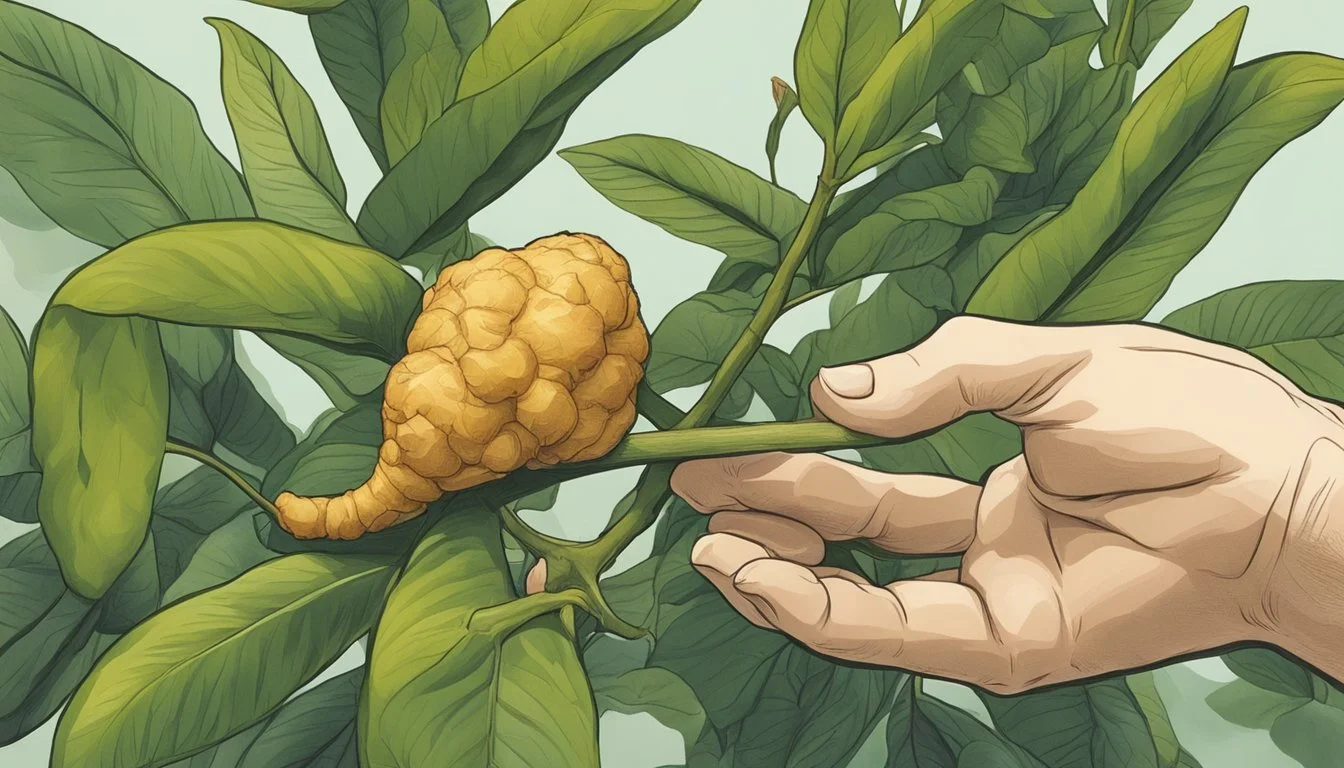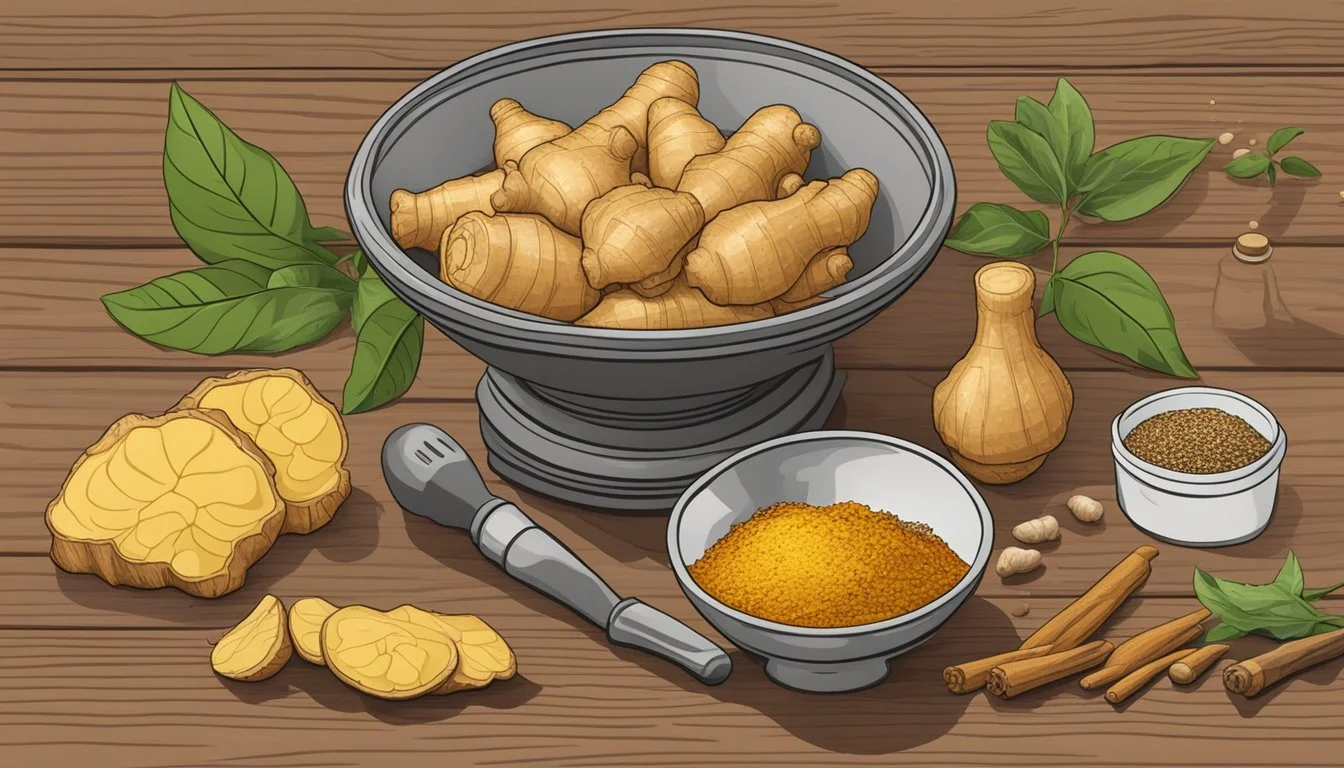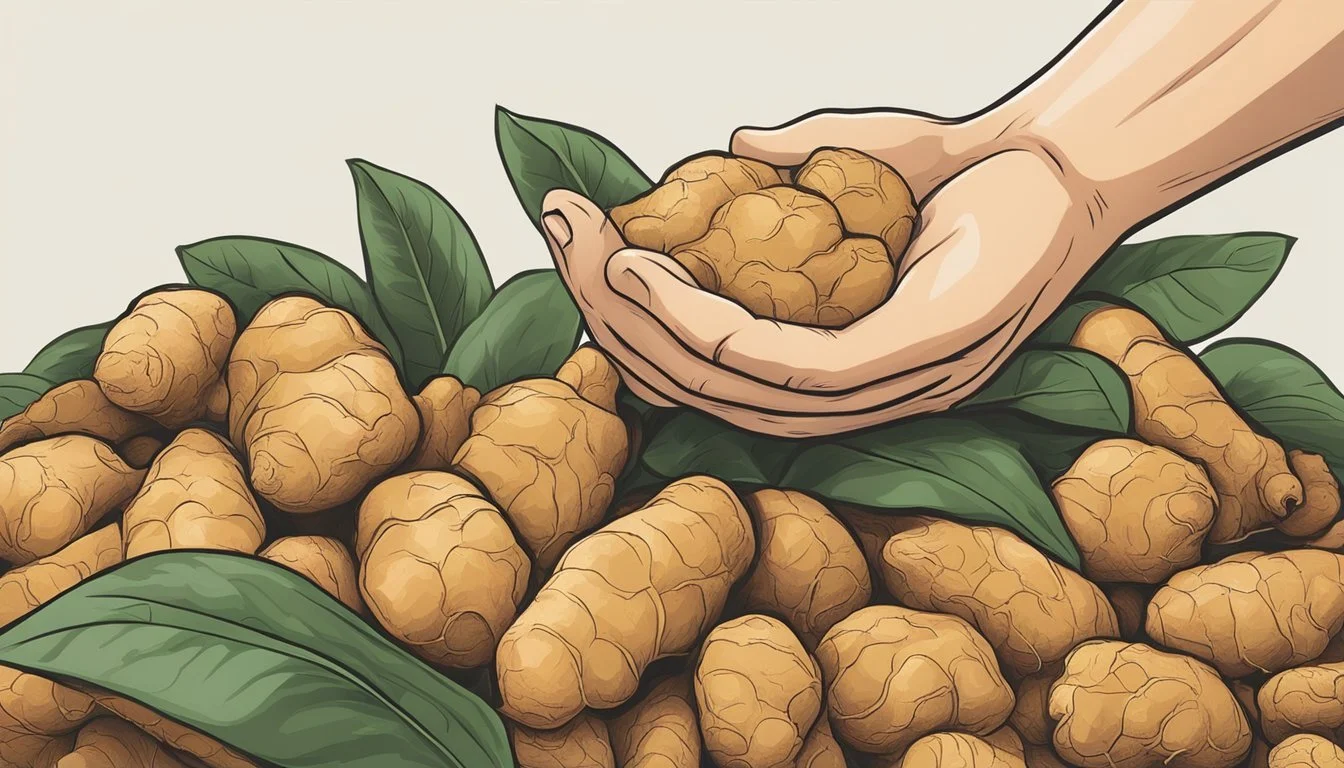Does Ginger Root Go Bad?
Shelf Life and Storage Tips
Ginger root is a staple in many kitchens, prized for its flavorful, spicy kick and numerous health benefits. Yes, ginger root does go bad, especially if not stored properly. Fresh ginger should be firm, light-yellow in color, and have a strong, aromatic scent. Mold, dark spots, or a spongy texture signal that it's time to discard the root.
When stored appropriately in a cool, dry place, ginger can maintain its freshness longer. Peeling the ginger speeds up its spoilage, so it’s best to keep the skin intact until use. To maintain ginger's flavor and health benefits, it’s important to know these signs of spoilage and proper storage techniques.
Mold or an unusual off-putting odor are the most unmistakable signs that your ginger has gone bad. Dry and shrunken pieces, or ginger that feels mushy, are also clear indicators. By ensuring proper storage and recognizing these signs, one can enjoy the full culinary and health benefits of fresh ginger root.
Recognizing Fresh Ginger
Fresh ginger exhibits key characteristics in color, texture, firmness, and aroma that signify its quality and potency. Identifying these traits helps ensure you select and use only high-quality ginger.
Color and Appearance
Fresh ginger has a light brown skin that is smooth. When cut open, the flesh inside should be bright yellow. Any presence of dark spots, mold, or a dullness in color indicates the ginger may be starting to go bad.
Healthy ginger skin should be free from excessive wrinkles, cracks, or soft patches. These signs suggest the root is aging or has been stored improperly. Consistent brightness in color and a uniform appearance are the hallmarks of healthy ginger.
Texture and Firmness
The texture of fresh ginger should be firm and slightly tough to the touch. When you press on the ginger, it should not feel spongy or soft. A fresh ginger root that feels firm ensures it still retains its natural juices and pungency.
If the ginger feels wrinkled, mushy, or overly dry, it may have lost some of its freshness and potency. These textural qualities are essential for determining whether ginger is good for cooking or other uses.
Aroma and Flavor
Fresh ginger has a distinctive, pungent aroma. When scratched or cut, a sweet, spicy scent should be immediately noticeable. This potent aroma is a good sign of the ginger's flavor and potency.
In terms of flavor, fresh ginger should deliver a strong, somewhat zingy taste when sampled. If the ginger has a weak, less pungent flavor or emits an off, sour smell, it is likely past its prime. Ensuring the ginger has a robust aroma and flavor is key to its effectiveness in culinary applications.
Signs of Ginger Going Bad
Ginger root can exhibit various signs when it starts to go bad. Key indicators include mold growth, changes in texture, deviations in odor and taste, and noticeable discoloration or blemishes.
Mold and Spoilage
When ginger begins to spoil, mold is one of the most clear indicators. Mold typically appears as fuzzy or discolored patches on the surface. Sometimes, it's green, white, or even black. These mold spots can spread quickly, rendering the ginger root unsafe to use. Spoiled ginger should be discarded immediately as consuming moldy ginger can be harmful to health. Additionally, moldy ginger will often have a mildew-like smell, which is distinctly unpleasant and a strong sign of spoilage.
Changes in Texture
Fresh ginger root is firm to the touch. When ginger starts to go bad, it often becomes soft and mushy. This change in texture is caused by the breakdown of the ginger’s fibers. A wrinkled surface may also be a sign, but slight wrinkling alone doesn't necessarily indicate that ginger has gone bad completely. The texture change generally makes the ginger difficult to use for its intended culinary purposes, and a mushy texture indicates it should be discarded.
Odor and Taste Deterioration
The odor of fresh ginger is sharp, sweet, and slightly peppery. When ginger goes bad, this smell is replaced by a sour, musty, or unpleasant odor. If the initial fragrance is off-putting or smells "off," the ginger is likely spoiled. Taste is also compromised; fresh ginger should impart a zesty, warm flavor. Spoiled ginger, conversely, can taste bitter or bland, which can adversely affect the flavor of dishes.
Discoloration and Blemishes
Ginger should be bright yellow when freshly cut. Discoloration is a common sign of spoilage. Spoiled ginger might turn darker yellow, brown, or develop greyish rings inside. Blemishes such as bruising can also indicate damage, although minor bruising doesn’t necessarily mean the ginger is entirely bad. Dark spots or a general darkening of the root signifies the ginger is no longer fresh and should be discarded to avoid undesired taste and possible health risks.
Proper Storage Solutions
Ensuring ginger root stays fresh involves various storage methods that cater to different timeframes. Techniques include refrigeration, freezing, and room temperature storage.
Refrigeration
Storing ginger in the refrigerator prolongs its freshness for up to six weeks. Place unpeeled ginger root in a paper towel to absorb moisture and then in a paper or cloth bag. A breathable container prevents mold and keeps the root dry. Peeled ginger should be stored in an airtight container to avoid moisture loss and maintain its shelf life. Store the container or bag in the crisper or vegetable drawer of the fridge to keep it cool and fresh.
Freezing Techniques
Freezing ginger preserves it for up to six months. To freeze, peel the ginger and chop it into small pieces. Store these pieces in an airtight container or plastic bag to prevent freezer burn. Another method involves grating the ginger and placing it in an ice cube tray filled with water or broth. Once frozen, transfer the cubes to a freezer-safe bag. This technique allows for easier portioning when needed for recipes.
Pantry and Countertop
Whole, unpeeled ginger root can be kept at room temperature for a short duration. Store it in a cool, dark place such as a pantry to ensure it stays fresh for a few days. Using a paper bag helps absorb excess moisture. This method is suitable for immediate use but is less effective for long-term storage. Avoid airtight containers for room temperature storage, as they can trap moisture and accelerate spoilage.
Maximizing Ginger Shelf Life
Properly handling ginger root, preserving it in liquids, and using airtight containers can extend its freshness significantly.
Handling and Cutting
When working with ginger, always use clean, sharp utensils to minimize damage. Peel ginger carefully to avoid unnecessary loss of the root. If cutting, ensure slices or pieces are uniform to promote consistent drying if that is the preservation method chosen.
Handle the root with dry hands to prevent introducing moisture which can accelerate spoilage. Once cut, only slice off as much as needed. Store the remaining portion properly as per the recommended methods to ensure prolonged freshness.
Preserving in Liquids
Ginger can be preserved in liquids such as alcohol, including vodka or sherry, as well as in vinegars. These liquids act as preservatives by preventing oxidation and microbial growth. To do this, submerge peeled ginger slices in a sterilized container filled with your choice of liquid.
This method not only extends ginger's shelf life but can also infuse the liquid with a subtle ginger flavor. Refrigerating the jar will provide an additional barrier against spoilage.
Using Airtight Containers
Airtight containers are essential for keeping ginger fresh. Glass containers with lids are preferable as they do not absorb odors and can be easily sterilized. Plastic bags with a zipper lock can also be used but ensure that excess air is removed before sealing.
Store the containers in the refrigerator to inhibit mold growth and moisture accumulation. If freezing, use airtight freezer-safe bags to maintain the root's freshness longer. Label containers with the date of storage to monitor the ginger's freshness and consumption timeline, ensuring it is used before its expiration date.
Culinary Uses and Preservation
Ginger root is a versatile ingredient known for its warm, spicy flavor. Proper preservation of fresh, powdered, and paste forms is key to maintaining its potency and extending shelf life.
Cooking with Fresh Ginger
Fresh ginger is a staple in many culinary recipes, ranging from savory dishes to sweet treats. To use fresh ginger, it should be peeled and either sliced, chopped, or grated depending on the recipe requirements. The sharp, spicy notes of fresh ginger are perfect for adding depth to stir-fries, soups, and marinades.
Stir-fries: Fresh ginger adds a warm, peppery kick that complements garlic and soy sauce.
Soups: A small amount can enhance broths and soups, providing a subtle yet noticeable spiciness.
Marinades: Grated ginger works well with meats and vegetables, infusing flavors deeply before cooking.
To preserve fresh ginger, store it in a cool, dry place or refrigerate it wrapped in paper towels and sealed in an airtight container. It can also be frozen to extend its shelf life further.
Incorporating into Tea and Beverages
Ginger is widely used in beverages such as tea and mixed drinks for its health benefits and warming flavor. Fresh ginger tea is made by steeping sliced or grated ginger in hot water, often combined with lemon juice and honey to create a soothing drink.
Ginger Tea: It's a popular remedy for sore throats and colds due to its anti-inflammatory properties.
Smoothies and Juices: Adding a small amount of ginger juice or grated ginger can enhance the flavor profile of fruit and vegetable blends.
Cocktails: Fresh or powdered ginger can be mixed into alcoholic drinks, adding a unique spice and heat.
For storage, fresh ginger should be kept as noted above. Infused ginger beverages can be stored in the refrigerator for a few days without losing their potency.
Creating Pastes and Powders
Ginger paste and powdered ginger are convenient alternatives to fresh ginger, particularly when time is limited. Ginger paste is made by blending fresh ginger with a small amount of oil and salt, used frequently in various cuisines to add intense flavor without the texture of fresh pieces.
Ginger Paste: Ideal for curries, sauces, and marinades. It blends smoothly into dishes and saves prep time.
Ground Ginger: Often used in baking, such as gingerbread, cookies, and spiced cakes. It provides a concentrated flavor perfect for sweet baked goods.
Dried Ginger: Commonly found in spice racks, it can be rehydrated or used directly in recipes.
Store ginger paste in an airtight container in the refrigerator, and it will last for several weeks. Ground and dried ginger should be kept in a cool, dry place, retaining their flavor for up to a year.
Ginger's Health and Medicinal Benefits
Ginger is renowned for its health benefits, particularly in aiding digestion and reducing inflammation. Its active compounds, such as gingerol, have demonstrated efficacy in various medicinal applications.
Digestive Aid
Ginger facilitates gastrointestinal motility, the process by which food exits the stomach. This acceleration prevents food from lingering in the gut, potentially alleviating symptoms like bloating and discomfort.
Its effectiveness in managing nausea has been well-documented. Consuming ginger can help with morning sickness, motion sickness, and nausea induced by chemotherapy. Studies support that ginger's compounds can relieve nausea and improve stomach emptying.
A small dose of ginger, whether in tea, capsules, or raw form, might support individuals looking to ease digestive discomfort.
Anti-Inflammatory Properties
Ginger contains gingerol, a potent anti-inflammatory and antioxidant compound. These properties make it beneficial for conditions associated with inflammation.
For example, people with osteoarthritis may find relief from pain and stiffness through ginger supplementation. By reducing inflammatory responses, ginger may alleviate some symptoms of chronic inflammatory conditions.
Its antioxidant content helps combat oxidative stress, which contributes to cellular aging and various diseases. Regular inclusion of ginger in the diet could hence support overall well-being by mitigating inflammation and oxidative damage.
Determining Ginger Quality When Shopping
When shopping for ginger root at the grocery store, it's important to choose pieces that are firm and fresh. Firmness indicates that the ginger is not yet decaying. If the ginger feels soft or mushy, it should be avoided.
Appearance plays a crucial role. Fresh ginger should have smooth, unwrinkled skin. Look for a light-yellow tan color; darker spots or a slimy texture suggest spoilage.
Sniff the ginger. It should emit a sharp, sweet, peppery scent. If the ginger gives off an unusual or pungent odor, it might be on the verge of going bad.
Checklist for Quality Ginger:
Firm texture
Smooth, unwrinkled skin
Light-yellow tan color
Sharp, sweet, peppery scent
By following these guidelines, you can ensure you select high-quality ginger for your culinary needs.
FAQs on Ginger Storage and Freshness
Proper storage can extend the shelf life of ginger significantly. Here, we address frequent questions regarding the best ways to store ginger and how to assess its freshness.
Common Storage Queries
Where should you store ginger?
Fresh ginger is best kept in a cool, dry place. A pantry works for short-term storage. For longer preservation, the fridge or freezer is preferable.
Can ginger be frozen?
Yes, ginger can be frozen. Peel and slice or grate the ginger before placing it in a freezer bag. This can extend its shelf life to several months.
What containers work best?
Airtight containers or freezer bags help maintain freshness. This reduces exposure to moisture and air, which can lead to spoiling.
Is it okay to store ginger on the countertop?
For short periods, keeping ginger on the countertop is fine. It should be used within a week for the best flavor and freshness.
Understanding Ginger's Shelf Life
How long does fresh ginger last?
Fresh ginger typically lasts about 1-2 weeks in the pantry. Refrigerated in an airtight container, it can stay fresh for up to 1-2 months.
What about ground or paste ginger?
Ground ginger has a longer shelf life. It can stay fresh for up to 2-3 years if stored in a cool, dark place. Ginger paste should be used within a few weeks and kept refrigerated.
How to tell if ginger is bad?
Bad ginger often shows mold or a soft, shriveled appearance. Fresh ginger is firm to the touch, with a sharp, sweet, and peppery scent. Inspect it closely for any discoloration or sour smell, which indicates spoilage.
Does ginger have an expiration date?
Fresh ginger doesn’t come with a specific expiration date. However, ground or packaged ginger often includes an expiration date. Always check the packaging for the best before date to ensure maximum freshness.





